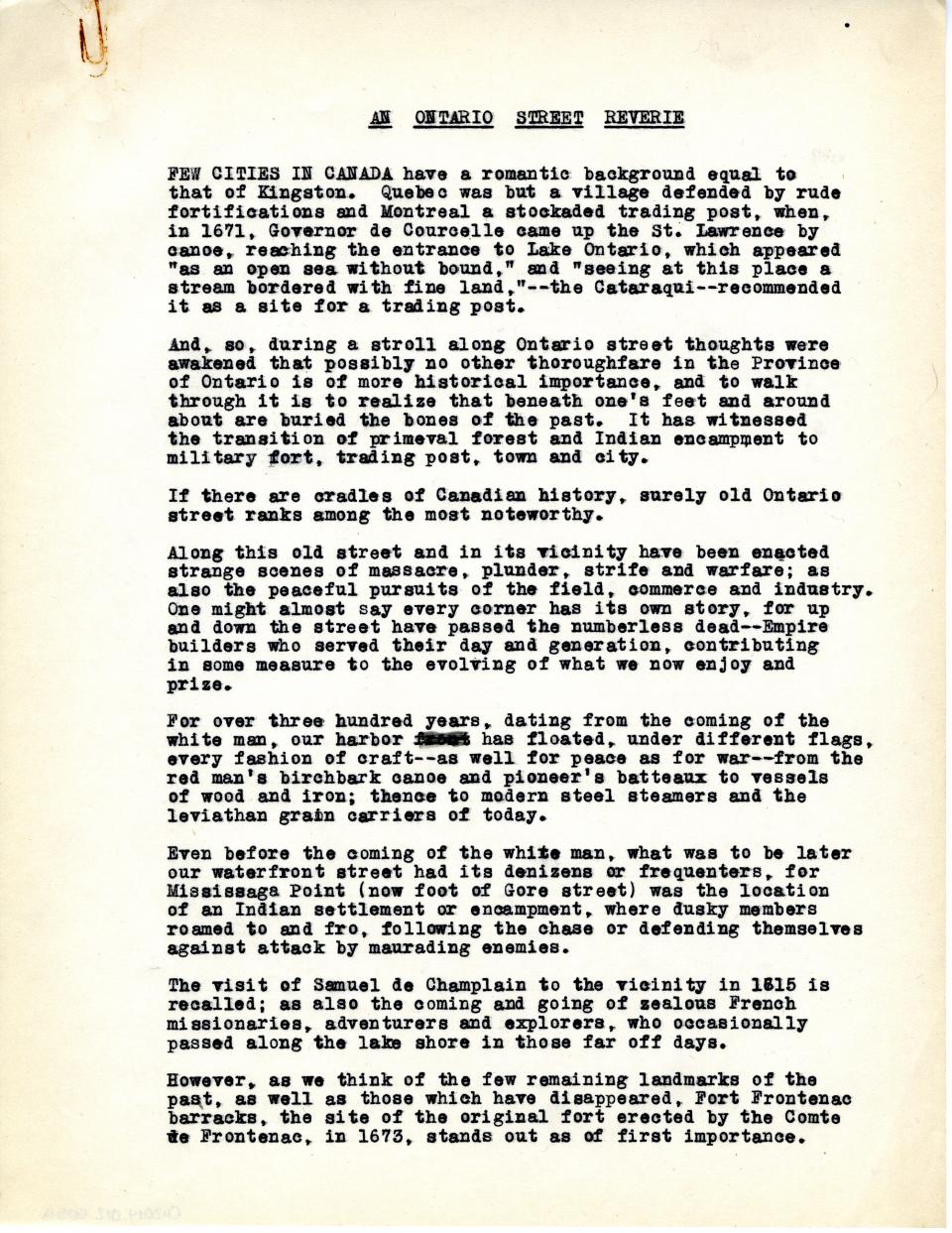
a-k- Width: 21.6 cm x Length: 27.9 cm
This is a typed essay in an unbound collection of pages that details some of the history surrounding Ontario Street.
a- This is the first page of the essay. It describes Kingston, and Ontario St specifically, as one of the "cradles of Canadian history." It starts recounting the history before European settlers as the author understands it.
b- This is the second page of the essay. It covers the founding of Fort Frontenac in 1673, the burning of the fort, and it's re-habitation in 1695.
c- This is the third page of the essay. It is single sided, and typed. It speaks to the spoils of war and prisoners that Ontario street must have seen in 1756, as well as the destruction of the fort in 1758 by the English and its eventual re-habitation by the British in 1760.
d- This is the fourth page of the essay. It discusses the events of soldiers and military from the War of 1812 to the end of the Second World War. It also speaks to the founding of Christian Religious services and hospitals on the street.
e- This is the fifth page of the essay. It speaks to the collection of Loyalists coming up from America during the Revolutionary War.
f- This is the sixth page of the essay. It covers some of the early prominent merchants of Ontario St (Richard Cartwright and Robert Hamilton, Robert Macaulay and his son John, Nicholas and Laurence Herchmer, Thomas Markland, and Peter Smith). There is a pencil note on the side that says "until 1951".
g- This is the seventh page of the essay. It speaks to some of the prominent members of Kingston who lived and worked on Ontario St (such as John Kirby, Henry Murney, Christopher Hagerman, John Counter, Hon. George Markland, Dr. James Sampson, Dr. Marshall, Judge Burrows and Thomas Kirkpatrick).
h- This is the eighth page of the essay. It discusses first the trial and execution of Von Schultz, who had lead an attack on Prescott to help liberate Canada. It also discusses some of the history of taverns on the street, as well as the social purpose of the Penny Bridge.
i- This is the ninth page of the essay. It discusses the Penny Bridge and the opening of the Le Salle Causeway in 1916. It also talks about the development and history of the Market Battery, from when it was formed in 1848 to when it was given to the City in 1876. There is a pencil note in the margin that reads "marker".
j- This is the tenth page of the essay. It discusses the selling and demolishing of Battery Park in 1885 to when it was turned into a railway station and freight yard. It then discusses the shipping history of the street, from La Salle's construction of boats, to the Loyalist building at the foot of Gore St, to the Naval Dock Yard in 1812, to the operation of steam boats, to the diminishing and vanishing practise of local shipbuilding.
k- This is the eleventh and last page of the essay. It is single sided, and typed. It discusses the way the harbour must have looked, and describes the kinds of sailors that worked there. It concludes with "Oh, what a street old Ontario has been!"
